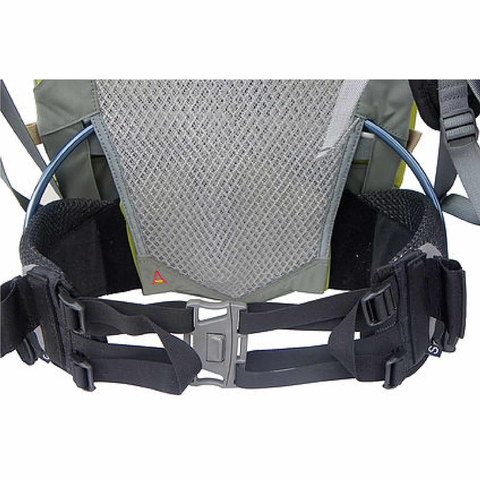Trekking through rugged terrain, scaling steep slopes, and conquering challenging trails can be exhilarating.
However, the strain it places on your legs can sometimes lead to discomfort or even pain. If you're an avid hiker or backpacker in the USA or Canada, you'll want to ensure that leg pain doesn't hinder your outdoor adventures.
In this guide, we'll provide some valuable tips to minimize hiking leg pain, ensuring your journeys remain enjoyable and pain-free.

1. Prepare with Proper Footwear
The foundation of a comfortable and pain-free trek lies in your choice of footwear. Ill-fitting shoes or boots not tailored to the specific terrain you'll be traversing can quickly lead to discomfort and leg pain. It's essential to invest in hiking footwear that offers the right balance of support and flexibility.
Look for shoes or boots that provide adequate ankle support, especially when tackling uneven or rocky trails. Ensuring a snug yet not overly tight fit is crucial to prevent blisters and discomfort. Additionally, consider moisture-wicking socks to keep your feet dry and minimize the risk of painful blisters.
2. Gradual Conditioning
Conditioning your body before embarking on challenging treks is a multi-faceted process that encompasses both physical and mental preparation. Begin by gradually increasing your physical endurance through regular cardiovascular exercises such as brisk walking, jogging, or cycling. Additionally, incorporate strength training exercises targeting the legs, core, and upper body to enhance overall fitness.
Mental conditioning involves developing a positive mindset and mental toughness to overcome obstacles on the trail. Engage in visualization exercises to mentally prepare for the journey ahead. This holistic approach ensures you're well-prepared to minimize leg pain and enjoy your trek to the fullest.
3. Maintain Proper Hydration
Another important way to reduce hiking leg pain during treks is through hydration. Dehydration can exacerbate muscle cramps and discomfort, making it essential to maintain proper hydration. In addition to carrying an ample water supply, consider electrolyte-rich beverages, especially when hiking in hot or humid conditions.
Electrolytes help replenish essential minerals lost through sweat, reducing the risk of muscle cramps and fatigue. A hydration strategy should include regular sips of water throughout your trek, even if you don't feel thirsty. Adequate hydration keeps your muscles functioning optimally and ensures that leg pain doesn't disrupt your outdoor adventures.

4. Stretch Before and After
Effective stretching routines are vital bookends to your trek. Dynamic stretching before your hike serves to prepare your muscles for the physical demands of the trail. These stretches include leg swings, knee lifts, and walking lunges, among others. Post-trek static stretches are equally crucial for enhancing flexibility and reducing muscle tightness.
Focus on stretching the quadriceps, hamstrings, calves, and hip flexors. Hold each stretch for at least 15-30 seconds to promote muscle relaxation and reduce the risk of post-trek soreness. Proper stretching routines ensure that your leg muscles remain supple and less prone to fatigue or cramps.
5. Use Lightweight Backpacking Gear
The weight you carry on your back can significantly impact your leg health during a trek. Opting for lightweight backpacking gear can dramatically reduce the strain on your legs. Brands like Aarn specialize in balanced, lightweight backpacks that distribute weight evenly across your body.
These backpacks come equipped with adjustable straps and padded hip belts to enhance comfort and reduce the burden on your legs. Investing in lightweight gear ensures that you enjoy more comfortable and pain-free treks, allowing you to explore nature without leg fatigue holding you back.
6. Proper Trekking Poles
Trekking poles are invaluable tools for maintaining balance, reducing leg strain, and enhancing overall trekking comfort. These poles distribute your weight more evenly across your body, which is particularly beneficial during descents or when navigating uneven terrain.
To maximize their effectiveness, choose trekking poles with adjustable lengths that allow you to adapt to various trail conditions. Additionally, consider poles with shock-absorbing features to further reduce the impact on your legs and joints. Properly used trekking poles promote better balance, reduce muscle fatigue, and significantly minimize the risk of hiking leg pain during your hikes.

7. Maintain a Consistent Pace
Maintaining a consistent hiking pace is a fundamental strategy for preventing leg pain. Starting your trek at a manageable pace and maintaining it throughout ensures that you don't overexert yourself early on. Overexertion can lead to muscle fatigue, discomfort, and leg pain.
Listen to your body's cues and take short breaks as needed, especially during more challenging sections of the trail. Steady pacing not only conserves your energy but also promotes better blood circulation and oxygen delivery to your leg muscles, reducing the risk of pain or cramps.
8. Adequate Nutrition
Nutrition plays a pivotal role in maintaining energy levels and preventing hiking leg pain. A well-balanced diet that includes carbohydrates, protein, and essential vitamins and minerals is essential. Carbohydrates provide the primary source of energy for your muscles during extended hikes, so include sources like whole grains, fruits, and energy-rich snacks in your trail diet.
Protein on the other hand aids in muscle repair and recovery, ensuring your legs stay strong throughout your trek. Additionally, pay attention to electrolytes like sodium, potassium, and magnesium, which help maintain fluid balance and prevent muscle cramps.

By incorporating these 8 tips into your hiking and trekking routines, you can significantly minimize the risk of hiking leg pain during your outdoor adventures. Remember that enjoying the beauty of nature should never be compromised by leg discomfort.
To get your hands on top-quality backpacking gear, you must connect with our team at Light Hiking Gear. We are an online store that stocks a broad range of items for hiking adventures across the United States and Canada. Some of our best-selling items include Aarn backpacks, balance pockets, and bear canister holders to name a few.
Visit our website to learn more about our products.

0 comments